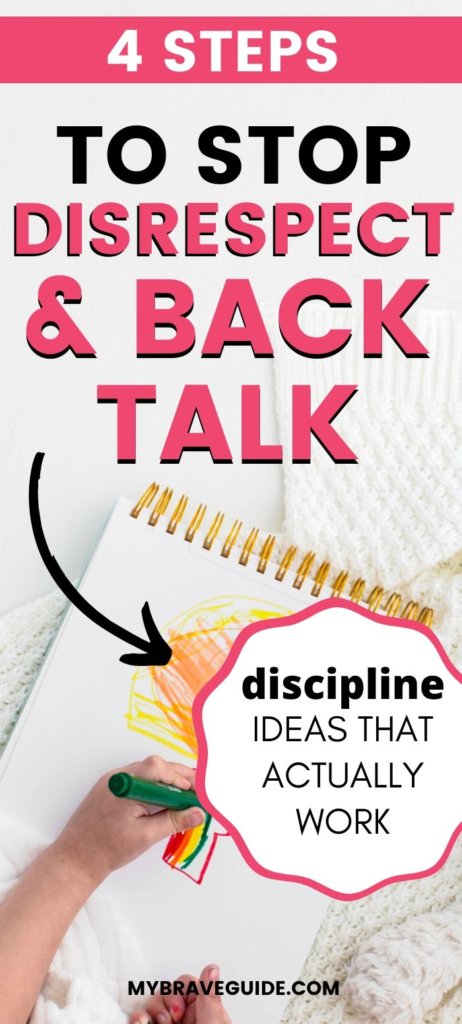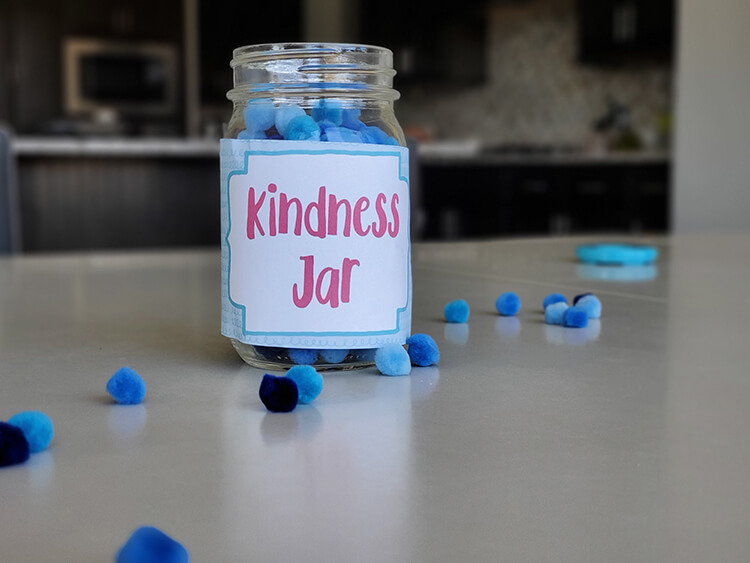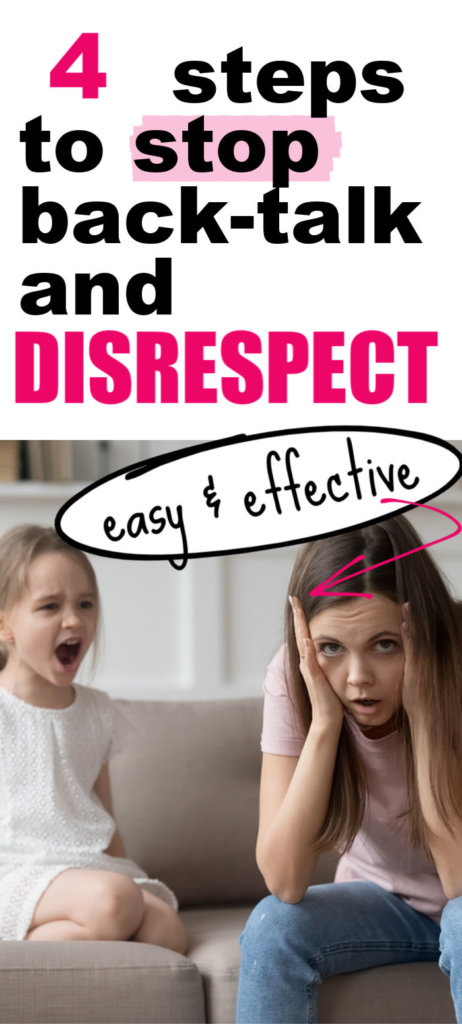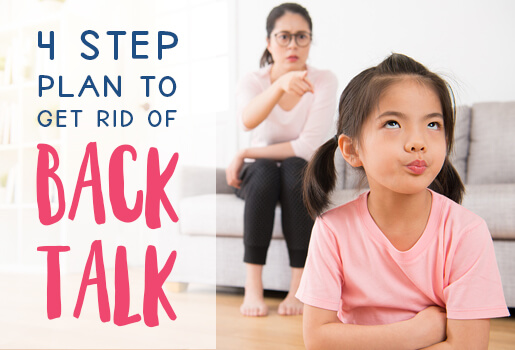Back talking in children can be nothing short of humiliating and rage-inducing!
A few weeks ago, I found myself in an all-out battle of wills full of backtalk and attitude with my youngest son. He had just come out of school and we were heading out to our car when he very loudly insisted, “Mom, carry my backpack!” (His tone was downright rude!) He was demanding that I carry his backpack, my hands were full, and he pulled out an attitude like a prizefighter pulls out his fists.
This back talking battle was one that neither one of us was going to win. At that moment, it was honestly, too hard to get past the humiliation, anger, and disbelief to realize that my son’s sassy demands really had nothing to do with his backpack. And, to be honest, I put on my own metaphorical boxing gloves and got into it with him. (Not my finest moment!)
After the fact, and with weeks of backtalk, anger, and frustration filling our conversations, I came to the realization that something had to change. My angry response to his demands just wasn’t getting us anywhere. The back talking was escalating as was my anger.
After a lot of contemplation and research, I have developed a 4 step plan to deal with the back talk and attitude.

Step 1 Figure Out Why Your Child is Talking Back
It is really important to understand why your child is talking back and responding with anger and attitude. Anger is very rarely the actual emotion going on in situations – it is a common mask for sadness, helplessness, embarrassment, and control issues.
So, spend some time exploring what your child might be feeling under all that anger. Here are some common emotions/situations that can lead to backtalk:
- Feeling out of control or feeling over-controlled
- Feeling hurt, sad, or unloved
- Feeling unheard or like no one sees them
- Not having the skillset to express big emotions in healthy ways
- Repeating or modeling others’ behavior (generally your behavior)
One good resource for getting to the root cause of the anger is The Brave Guide to Anger. This is a self-led workbook for kids that helps them recognize, understand, and control their anger. Check out The Brave Guide to Anger here.
Step 2 Have a Conversation about the Back Talking
Once you have an idea of what you think might be going on, it is time to have a conversation with your child to let them know that you plan to make some changes. This conversation should be done at a calm and well-chosen time. (You want everyone to be well-rested, not hungry, and not distracted.)
Here are some ideas for topics to include in your conversation:
- State your feelings about the current situation. (When you talk to me in a mean tone of voice, it really hurts my feelings and makes me feel embarrassed.)
- Apologize for your role. (I have been responding to you with a lot of anger and I am sorry, that is not how I want to respond going forward.)
- Ask your child why they have been talking back and feeling angry lately. (One great trick if they say they don’t know why, is to ask, “If you did know why, what would the answer be?” and then wait for them to think and respond.)
- Set expectations and boundaries. (But remember, if you suspect that some of the back talk and attitude is related to control issues, you may need to find ways to compromise rather than just setting hard and fast rules)
- Ask your child for suggestions on a solution and suggest some of your own solutions. (We have started a “code word” in my house to help both me and my son remember to not get angry. If he back talks, I ask him, “do you want to try that again?” He can also ask me if I am speaking out of anger to him.)
If these kind of conversations are tough for your child, you may need to start by addressing their listening skills. The Be Heard Method is a parenting course that addresses the 5 common causes for kids not listening and helps you address and fix those problems. (You also end up with a lot less back talk when your child develops better listening skills!!!)
Check out The Be Heard Method if you need some help with listening skills.
Step 3 Stop Back Talk with a Reward System
As with most behavioral interventions with kids, rewarding the positive will work much better and faster than coming down hard and fast with punishments and criticisms. We use a Kind Jar in our house which has worked well for reducing backtalk. The Kind Jar System gives us a tangible and easy way to reward positive behavior.

This rewards system also encourages me and my husband to model the behavior that we want to see. This is an important factor as, to be totally honest, I am prone to be a little too full of attitude myself and I am pretty sure that some of the back talking is coming from “monkey-see, monkey-do”.
You can check out the DIY Kind Jar Kit Project to get instructions and templates for making your own.
Step 4 Implement Your New Plan
Your plan for responding to backtalk may include more, based off of the conversation you had with your child, but here is what my plan looks like:
- Stay Calm. (I am continually reminding myself that the way I react can either encourage escalation and anger or can help model the positive, kind behavior I am asking my son to exhibit.)
- Encourage your child to take a deep breath and try their response again. (It is really helpful to practice deep breathing with your children for situations like this. Here are 5 deep breathing techniques for kids that are fun and easy to do.)
- Provide Choices. (My son has communicated that he feels like I don’t listen to what he wants and am just “bossing him around.” To address this, I am offering choices as often as I can: “Do you want to go to bed now, or in 5 minutes?” “Would you prefer to wipe the table down or empty the dishwasher?”)
- Try to weave in empathy. (“It sounds like you are feeling really upset right now – would you like to talk about it more?”)
- Provide logical consequences rather than big punishments. (I understand that you would rather play your video game than wipe the table or empty the dishwasher right now. You may take a time out on the couch until you are ready to do the dishes, but we won’t be getting out your game until these jobs are done.)
Getting Rid of Back Talk for Good
I wish that I could promise that these four steps would get rid of all talking back and attitude. But, realistically, the change will take time. It is important to remember this and continue to follow up with your child whenever there are slip-ups.
- Make sure to wait until things have calmed down. If you need some help getting things calmed down, check out this article on 5 ways to stop a tantrum.
- If you slipped up and got angry or demanding, be honest about your role in the slip-up and apologize.
- Ask your child what they think went wrong.
- Approach the conversation with a lot of empathy and understanding. Encourage your child that changing behaviors is hard for everyone (including you) and takes time.
- Make sure to remind and praise your child for specific times that they did have good responses and didn’t talk back. (The Kindness Jar Kit really does help with this!)
Sending you love and light!
~Ruth

You might also like…
Be Heard Method
5 Ways to Calm Older Kid Tantrums
Anger Management Activities for Kids
